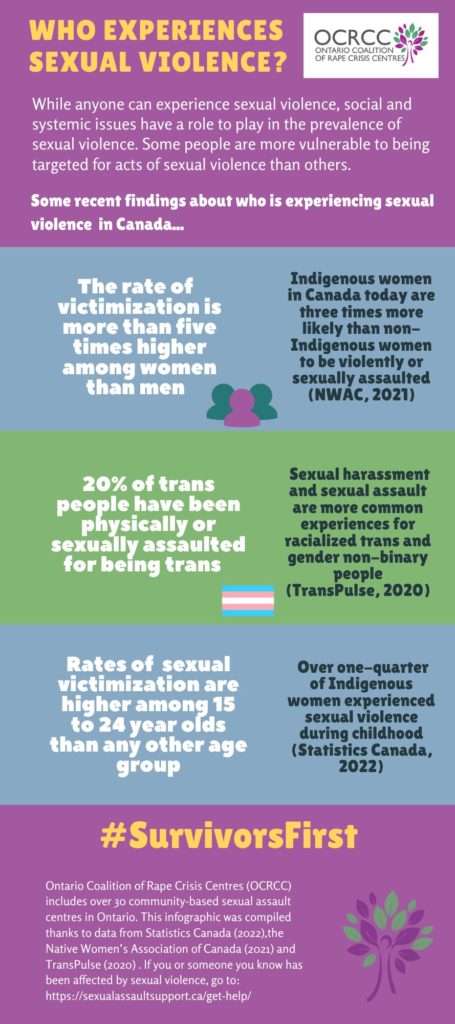While anyone can experience sexual violence, social and systemic issues have a role to play in the prevalence of sexual violence. Some people are more vulnerable to being targeted for acts of sexual violence than others.
Learn more about who is most affected by sexual violence in Canada.

This is an infographic about sexual violence rates in Canada.
Ontario Coalition of Rape Crisis Centres (OCRCC) includes over 30 community-based sexual assault centres in Ontario. This infographic was compiled thanks to data from Statistics Canada (2022), the Native Women’s Association of Canada (2021) and TransPulse (2020). If you or someone you know has been affected by sexual violence, go to: https://sexualassaultsupport.ca/get-help/